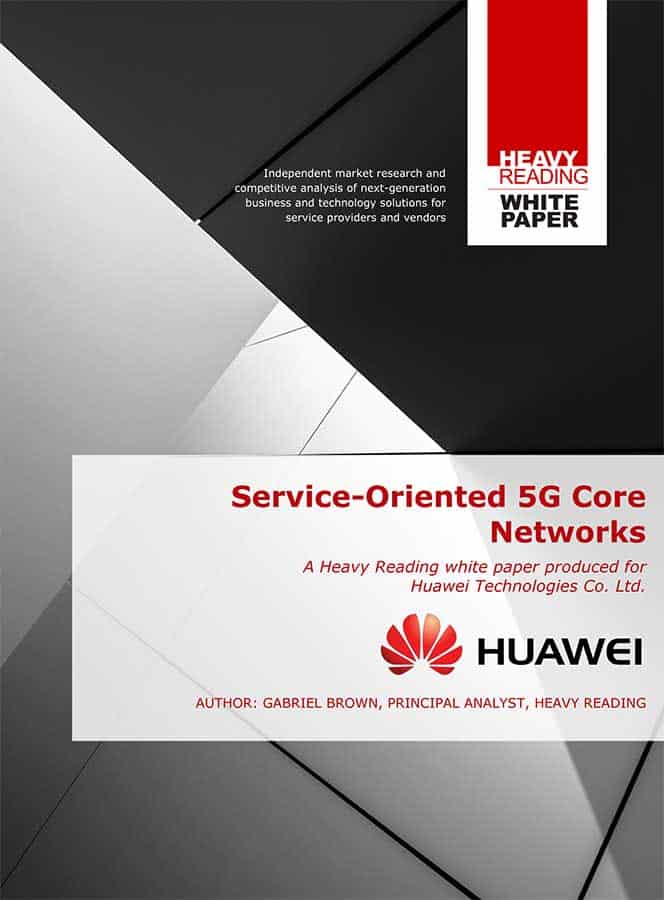
Huawei and Heavy Reading have partnered on a 5G Core white paper which focuses on the evolution of the core network to 5G. It defines the objectives and value of the 5G core for networks, and the key technologies and network architecture to move forward the 5G network technologies and architecture development.
With the rapid development of mobile broadband and the Internet of Things, the oncoming massive number of connections between people to people, people to machine and machine to machine will quickly begin to blur the boundary between the physical world and the digital world. By 2020, it is expected that an everything-connected world will become a reality with 5G becoming the key enabling technology. 5G technology has been a very hot topic for quite some time.
5G core will be crucial in terms of supporting 5G capabilities and a wider range of new services. The white paper describes the demands which commercial 5G services will place on networks, and how the key technical features of the 5G core will enable new services. The 5G core will have four key technical features.
- Control and user plane separation (CUPS) enables user plane distributed deployment, bringing inspired experience. CUPS simplifies the user plane, allowing resources to be flexibly deployed wherever needed to support a particular service and experience, without the need for complex configuration or management. Multi-access edge computing (MEC) takes advantage of CUPS to integrate gateway, CDN (Content Delivery Network) and third-party applications at the network edge, cutting network latency and improving the efficiency of network resources during heavy traffic flow.
- Restructuring the control plane, standardized and customized interface definitions shorten the TTM. By reconfiguring networks for plug-and-play delivery of network functions as a service, 5G networks enable fast access to the services which customers need. Networks will also be more agile because of the decoupling of network functions and the centralized management of both standard and customized functions.
- Network slicing enables various services in different industries. Network slicing creates multiple networks on one physical infrastructure. Each network can function independently, so that the network can simultaneously support the very different needs of multiple separate services. Independent lifecycle management and function upgrades are available for each slice, making network O&M more flexible and efficient.
- Fixed-mobile convergence (FMC) for user-centric bandwidth management ensures user experience. FMC enables the network to ignore heterogeneity in the physical access network, and apply centralized authentication and service processing. This means the network can guarantee the quality of the service experience in any scenario.
5G will bring about a better connected and intelligent world. In addition to connecting people, telecoms networks will also provide information and connection services for a wide range of industrial uses including autonomous vehicles, industrial controls, AR/VR, smart grids and smart homes. As a crucial part of the 5G network, 5G core will help operators build a platform that enables all access technologies and all service types.
Huawei initiated 5G research in 2009. It invests heavily in the technical innovation of 5G core network and is dedicated to promoting the development and standardization of 5G core network technologies. Huawei holds such key positions, including SA2 chairperson. It is the No.1 contributor in terms of proposals and accepted proposals. Huawei works closely with leading global operators, vertical industry partners, and standards organizations to promote 5G core network development. Together we can build a better connected world empowered by 5G.
Download the 5G Core white paper here.

